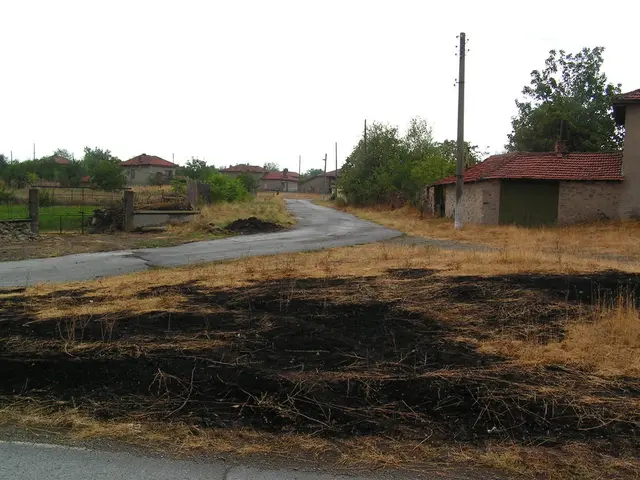Excursion to Naxos Island: Exploration of Gold and Precious Gems
The Greek island of Naxos is a treasure trove of history and natural resources, boasting marble, emery, flint, and gold that shaped its cultural, artistic, and economic development in antiquity.
Marble from Naxos is renowned for its soft texture, allowing sculptors to develop advanced carving techniques that contributed to the evolution of Greek sculpture. Iconic examples include the unfinished 6th-century BCE Kouros of Melanes and the Portara, the grand marble gateway of the Temple of Apollo. Naxian marble was highly valued and exported across the Cyclades and beyond, competing with famous marbles from Pentelic and Paros islands.
Emery, found in the northeastern mountains of Naxos, was critical in grinding and polishing in antiquity. Its abundant deposits made Naxos a central hub for its extraction and trade, supporting local craft and possibly export. Mining emery is a strenuous manual labour, yet the complex mineral composition of natural emery gives it an elasticity property that makes it hold together better than man-made products.
Flint was crucial for tool-making in prehistoric and early historic periods, contributing to the island’s early human activity and development. Though less prominent than marble or emery, flint helped sustain early societies on the island.
The presence of gold on Naxos is less documented, but in the broader context of the Cyclades, gold was a symbol of wealth and power. If gold was historically significant on Naxos, it would likely have contributed to the island’s prestige and economic status in antiquity.
Naxos flourished during the Late Neolithic and Early Bronze Age between 2700 and 2300 BC. Historically, Naxos and the Cyclades are famous for their Ancient Greek Cycladic civilization, which dates back to the 4th millennium BC.
The island's rich heritage is preserved in museums such as the Natural History Museum, housing over 1,300 specimens of sea and land fauna and flora of the island, and the Geological Museum, featuring over 3,000 specimens of rocks, minerals, fossils, and metals mostly found on the island.
Naxos is the largest island of the Cyclades and is rich in farming and stockraising. The modern marble quarries in Naxos produce the 'White Crystallina of Naxos' and the 'Semi-Crystallina of Naxos' marbles. Emery is found in large quantities on the slopes of Mt. Amomaxis between the villages of Koronos and Apeirnthos.
Visitors to Naxos can marvel at the white-washed houses, blue-domed churches, narrow cobblestone streets, and crystal blue sea waters, while also exploring the island's rich history and natural resources. The Romans called emery Naxium, and today, the Greek name of emery is 'smyris' or smirida in the local dialect of the lapidary and metal-smithing community.
In recent years, about 50 mines have been operating with around 500 workers, continuing the tradition of extracting these valuable resources that have shaped the island's history for millennia.
[1] Marble of Naxos [3] Flint [4] Emery
[1] The soft texture of the Marble of Naxos allowed ancient sculptors to develop advanced carving techniques, contributing significantly to the evolution of Greek sculpture.[2] Naxos' rich history in mining can be traced back to the prehistoric periods, with Flint being crucial for tool-making and shaping early human activity on the island.[3] Emery, abundant in the northeastern mountains of Naxos, was a central hub for extraction and trade in antiquity, making it an essential component in grinding and polishing technologies.[4] Today, about 50 mines continue to operate on Naxos, extracting Emery - a mineral that has shaped the island's history for millennia.




